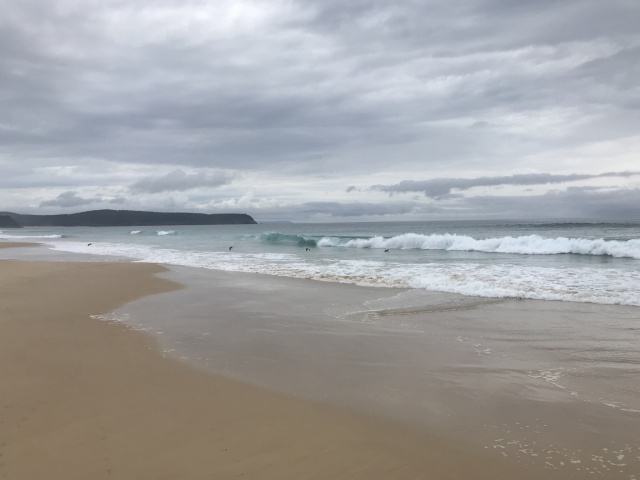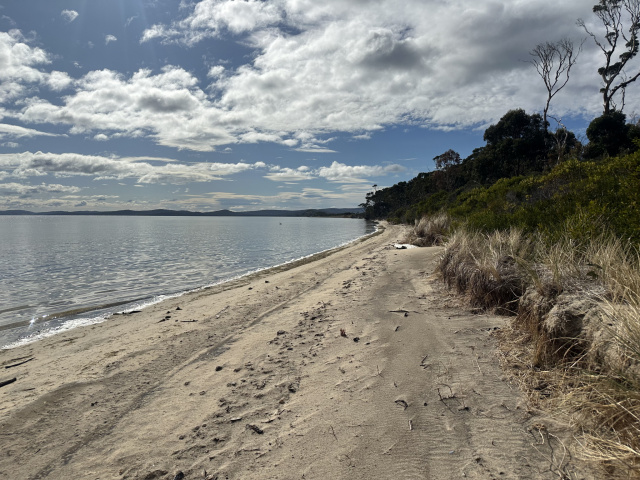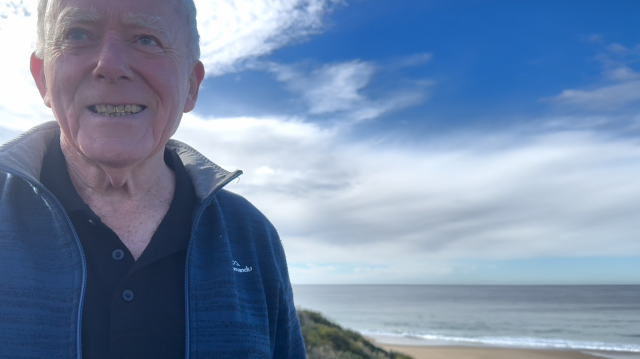If you stand at the neck on Bruny Island, you can see two long sweeping sections of coast on either side.
To the East, the Adventure Bay side is the Neck Beach, which opens to Adventure Bay.
This is an ocean environment, is open to storms, and is therefore a very mobile beach that moves about all the time, is less prone to erosion as it is used to big waves, and is much less productive in terms of foods for wildlife than the western side.
It has relatively coarse sand, compared to the west, and is more mobile - sands come and sands go.

Here you’ve got very low storm waves and disturbance which is mainly just wind driven. Its much more prone to erosion than the ocean side, so you’re getting that difference. Simpsons Bay has built up a lot of sand with the low water energy, and that means that sand doesn’t move at all, so you’ve got this amazing benthic fauna (organisms that inhabit the seafloor), with invertebrates (an animal that lacks a backbone), shellfish, a whole range of life forms. If you explored down a metre into that sand and silt and put it under a microscope, what you would see would be an incredible diversity of life. That rich, stable sandy environment rich with life goes out for probably two to three hundred metres. And the fact that Simpson’s point comes out to the Western end of Simpsons Bay, makes it an even larger area of rich stable shallow productive coastal waters. It has fine sand, and is very very stable, except for when you get high winds from the South-West.

You’ve got this amazing benthic fauna, with invertebrates, shellfish, a whole range of life forms...if you explored down into that sand and put it under a microscope, what you would see would be incredible. - Bob Graham


Bob Graham
If you stand at the neck on Bruny Island, you can see two long sweeping sections of coast on either side.
To the East, the Adventure Bay side is the Neck Beach, which opens to Adventure Bay.
This is an ocean environment, is open to storms, and is therefore a very mobile beach that moves about all the time, is less prone to erosion as it is used to big waves, and is much less productive in terms of foods for wildlife than the western side.
It has relatively coarse sand, compared to the west, and is more mobile - sands come and sands go.

Here you’ve got very low storm waves and disturbance which is mainly just wind driven. Its much more prone to erosion than the ocean side, so you’re getting that difference. Simpsons Bay has built up a lot of sand with the low water energy, and that means that sand doesn’t move at all, so you’ve got this amazing benthic fauna (organisms that inhabit the seafloor), with invertebrates (an animal that lacks a backbone), shellfish, a whole range of life forms. If you explored down a metre into that sand and silt and put it under a microscope, what you would see would be an incredible diversity of life. That rich, stable sandy environment rich with life goes out for probably two to three hundred metres. And the fact that Simpson’s point comes out to the Western end of Simpsons Bay, makes it an even larger area of rich stable shallow productive coastal waters. It has fine sand, and is very very stable, except for when you get high winds from the South-West.

You’ve got this amazing benthic fauna, with invertebrates, shellfish, a whole range of life forms...if you explored down into that sand and put it under a microscope, what you would see would be incredible. - Bob Graham

You might like...
Simpsons Bay
Simpsons Bay is an incredible rich and productive area of shallow coastal mudflats, rich in marine life like skates, stingrays and flathead, and with many coastal birds
Walks
Neck Beach
15 minutes - 4 hours. Depending on how far you walk along the beach! return
250m - 10km return
The Neck
The Neck is the thin isthmus connecting the broader land bodies of North and South Bruny it is bound by the shallow Simpsons Bay and D'Entrecasteaux Channel to the west and the sweeping sandy neck beach and Adventure Bay to the East
Bruny Island Coastline
Bruny Island has an intricate, complex, beautiful and varied coastline, ranging from sheltered inlets, shallow bays, mudflats, lagoons, and grand sea-cliffs, through to long sandy ocean facing beaches.
Newsletter
Sign up to keep in touch with articles, updates, events or news from Kuno, your platform for nature
